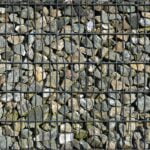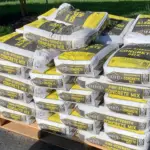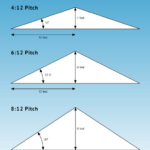Rats and mice, hey! I agree that they can look cute and cuddly; however, they do contaminate food, gnaw structures, gnaw wires that can cause electrical fires, and even spread diseases.
So, Rat infestations can cause serious problems in apartment buildings.
These pests can reproduce quickly, damaging property, spreading illnesses, and making living conditions unsanitary.
Properly managing rat infestations requires taking preventive steps and working with professional pest control experts.
By using preventive strategies and hiring commercial pest control services, commercial pest control near me; property managers can protect residents and maintain a safe environment in Canyon County, ID, and beyond.

Identification of rats & mice
The first step in the process is identification. There are many different types of rats and mice. The most common of these that you may encounter are the Norway rat, roof rat, deer mouse, or house mouse. Let’s review how to identify each one.
The Norway rat usually weighs anywhere from about 15 to 16 ounces. They’re typically found outdoors; they burrow into the ground or underneath structures. They have a blunt nose, small ears, and small eyes. The roof rat is usually found in attics, trees, along fence lines. They have a very slender body, weighing in at about 11 to 14 ounces. They have a pointed nose, large eyes, and large ears.
The deer mouse is most commonly found outdoors. Its body is 2 to 3 inches long, with the tail being of equal length. Both the eyes and ears are large, and its underside is white, while the backside is grayish-brown. Their coloring and agility resemble a deer; this is where they get their name, deer mouse. The house mouse’s body is usually about 2 to 3 inches in length, with a tail about 3 to 4 inches long. They have a pointed nose, large eyes, and large ears.
Also Read: Wood Mites – How to get rid of wood mites? Types – Sizes – Home Remedies
1. Regular Inspections
When rodents nest indoors and outdoors, they can multiply very quickly and create an environment that’s unhealthy for people. That’s why we need to take immediate action.
Regular inspections are crucial for spotting and stopping rat infestations early in apartment complexes. Property managers should thoroughly check common areas, utility rooms, basements, and outdoor spaces for signs of rat activity, like droppings, chew marks, and nesting materials. Catching infestations early allows for quick action.
How to know if you’ve got rat infestation?
We want to confirm rodent activity in or around the home. The easiest way to do this is by hearing noises in the attic. Also, some other things we want to look for are feces or droppings. Norway rat droppings are about three-quarters of an inch long and are blunt on each end. Roof rats’ droppings are about half an inch in length and pointed on each end, and the house mouse and deer mouse droppings are about a quarter inch in length and pointed on both ends.
We can also look for rub marks or smear marks along baseboards. Rodents’ bodies are very oily and often leave this oily film behind on the surface. They leave gnaw marks, love to chew on the edge of wood, maybe around a door frame. They leave hair behind when they go around corners and they put off a very foul odor, smells like urine.
Moving on to the outside, look for holes that are around the perimeter of the house. Also, take a look at your flower beds where vegetation has been compressed down to the soil; this is a sign where rodents are running back and forth.
2. Secure Waste Management
Proper waste management is crucial for reducing food sources and minimizing attractants for rats in multi-unit housing complexes. Property managers should ensure that garbage bins are securely sealed and emptied regularly to prevent rats from accessing food waste. Additionally, implementing recycling programs and providing residents with guidelines for proper disposal of food scraps can help deter rats from scavenging for food.
3. Seal Entry Points
Any entry point around the kitchen or other utility rooms need to be sealed. Any installed cases wherever there are pipes; these are entry points. A nice big hole is anything that a Byron pen can fit in, and adult mice can come through it. Even the rats can use cold water pipes to come up or come out of your walls.
On cookers, when you’re cooking, bits of fat run down. Because we live in a time where we’ve got plenty of McDonald’s, KFC’s, kebab shops, all with high-fat content food. The mice and the rats have gotten accustomed to this fatty content. Now, mice have very small stomachs; all they have to do is lick that fat and, again, food is up. Unless we look down, most people don’t pull their cookers up, and this is one of the reasons that we get mice in the first place because fat sits down there, rod droppings get caught down there.
Again, fridges are great hot spots; you can actually see it’s lovely and warm there, hidden and dark. If we’re going to leave any sort of food out, make sure that they’re in some sort of containers or in cupboards that are closed. Okay, we all seem to keep our rice in containers because it takes just a minute to put them in something like that.
I would say – yes, it’s about being clean, but no matter how clean you are, mice want to visit. If they find a food source, they’re going to stay.
We do recommend that if you see a little hole, block it off with a bit of wire wool, maybe put a cinder cone over it to hold it into place. Your builders or anybody that’s doing that can make it look cosmetic. This is our galvanized machine, and we always make sure that we oversize it; no mouse can chew through the pipe.
Besides kitchen, also look around the plumbing in the bathroom and kitchen; do you have large spaces or voids around that plumbing? These are places where rodents can enter. Outside, take a look at where plumbing actually penetrates the wall; do you have large spaces there? If you have any small areas, always use caulk; for large voids, use stuff-it, it’s a copper mesh product that you just stuff right up into the hole; it’s very simple to use and a great tool because rodents have a difficult time chewing through it.
4. Sanitation Measures
Maintaining cleanliness and sanitation in not unusual regions and outdoor spaces is important for preventing rat infestations. Property managers have to ensure that garbage garage areas are kept smooth and free of particles, and that landscaping is properly-maintained to take away hiding places for rats. Additionally, residents must be recommended to directly record any symptoms of rat pastime and to exercise right hygiene to lessen the threat of attracting pests.
5. Professional Pest Control Services
Enlisting the offerings of commercial pest control professionals is important for successfully coping with rat infestations in multi-unit housing complexes. Professional exterminators have the information, experience, and assets to implement centered treatments and manipulate measures to eliminate rats and prevent future infestations. Property managers need to partner with official organisation of pest control Canyon County ID, to develop customized pest control plans tailored to the unique needs of their homes.
6. Resident Education
Educating citizens approximately rat prevention measures and the significance of reporting signs of infestation is prime to keeping a pest-free environment in multi-unit housing complexes. Property managers ought to provide residents with statistics on a way to perceive symptoms of rat interest, proper waste disposal practices, and steps to take in the event that they stumble upon rats in their gadgets. By fostering a lifestyle of attention and cooperation, assets managers can empower residents to play an energetic function in pest prevention efforts.
How to prevent rats infestation?
Clean up the property, eliminate any unnecessary food or water, empty trash cans, those tree limbs that touch the roof of the house, trim them back, clean up your flower beds, bird feeders, eventually the birdseed is going to fall to the ground which is a food source for rats and mice. Doing all of these things will help prevent future infestations of rats and mice.
The bottom line
In conclusion, coping with rat infestation dangers in multi-unit housing complexes requires a comprehensive approach that combines preventive measures, ordinary inspections, sanitation efforts, and professional pest manage offerings. By prioritizing rat prevention and enlisting the information of business pest control professionals, property managers can protect the health and well-being of residents and maintain a safe and snug residing surroundings for all.


















